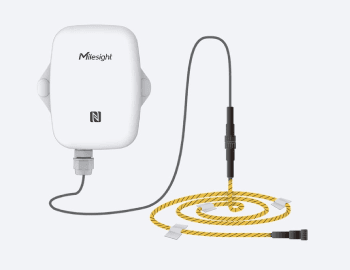We don't often like to think about how devastating water damage can be to a building, and in all likelihood, it's surely not bound to happen to you (at least, not enough to require a prepared plan), right? However, water damage is one of the most common and costly issues faced by commercial property owners and facility managers. From burst pipes to unnoticed drips, even a small leak can lead to massive disruption, structural damage, and spiralling repair costs. As more buildings embrace automation, smart leak detection technology is emerging as a must-have feature for proactive protection.
In this post, we explore how smart leak detection systems are transforming commercial spaces by cutting costs, reducing risk, and bolstering sustainability goals.
Why Does Leak Detection Matter in Commercial Buildings?
Why Does Leak Detection Matter in Commercial Buildings?
Commercial properties - whether offices, hotels, retail units or industrial facilities - tend to be large, complex, and often unoccupied for periods of time, unless you can afford a large staffing rotation; this makes them particularly vulnerable to undetected water leaks. Without a smart, automated system in place, leaks can go unnoticed for hours, days, or potentially weeks, leading to extensive damage across a larger space, leading to operational downtime and insurance headaches.
That’s where automated leak detection comes in: By monitoring water usage and detecting anomalies in real time, these systems give building owners and facility teams the ability to act quickly before a minor issue becomes a major problem.
How Do Smart Leak Sensor Systems Work?
Automated leak detection generally uses one or more of the following technologies:
Flow monitoring: This measures water flow within the pipework and identifies abnormal patterns that could point to a leak.
Sensor-based detection: Operated using probes, cables, or spot sensors to detect the presence of water.
Zone-based monitoring: Identifies leaks across wider or multiple areas with sensor tape or cables; this is ideal for large floor plans.
Remote control and alerts: Sends real-time alerts to facilities managers and can automatically shut off water in buildings to prevent further damage.
LoRaWAN connectivity: This enables long-range, low-power communication across devices in large or hard-to-reach buildings.
Smart systems like the EM300 Milesight zone leak detector demonstrate how adaptable and scalable these technologies can be across various building types and in different cases. For more compact installations, or specific high-risk points, the WS303 smart water leak detection sensor is a discreet but powerful solution that delivers immediate alerts and over five years of battery life.
Key Benefits for Commercial Premises
Reduced risk of water damage: When you catch leaks early (or prevent them altogether) smart systems protect buildings, stock, and equipment from expensive water damage.
Operational continuity: Avoiding disruptions is a crucial part of keeping a commercial business running. Automated leak detection minimises downtime by allowing immediate action before issues develop further.
Lower insurance premiums: Insurers increasingly recognise smart buildings leak detection technology, offering reduced premiums to buildings that have such systems in place.
Cost savings: Beyond insurance and repairs, wasting water is expensive in and of itself. Flow monitoring systems can offer consumption insights, helping to cut costs and improve efficiency.
BREEAM and sustainability compliance: Leak detection is vital to meeting environmental standards such as BREEAM (Building Research Establishment Environmental Assessment Method), particularly under the categories WAT02 (for water monitoring) and WAT03 (for leak detection and prevention).
Remote access and automation: Modern systems integrate with Building Management Systems or work autonomously. They allow building managers to monitor and control water systems remotely, which is particularly useful for multi-site portfolios.
Smart Prevention for Smarter Buildings
As buildings become more intelligent and interconnected, technology like lorawan leak detection, as mentioned in the products above, is not just a convenience that's lucky to have; it’s a necessity. By automating this crucial element of building maintenance, commercial property owners can significantly reduce risk, minimise unnecessary operational costs, and improve overall environmental performance.
If you're fitting out a new-build or upgrading an existing space, automated leak detection should be a key consideration in your building automation strategy.











